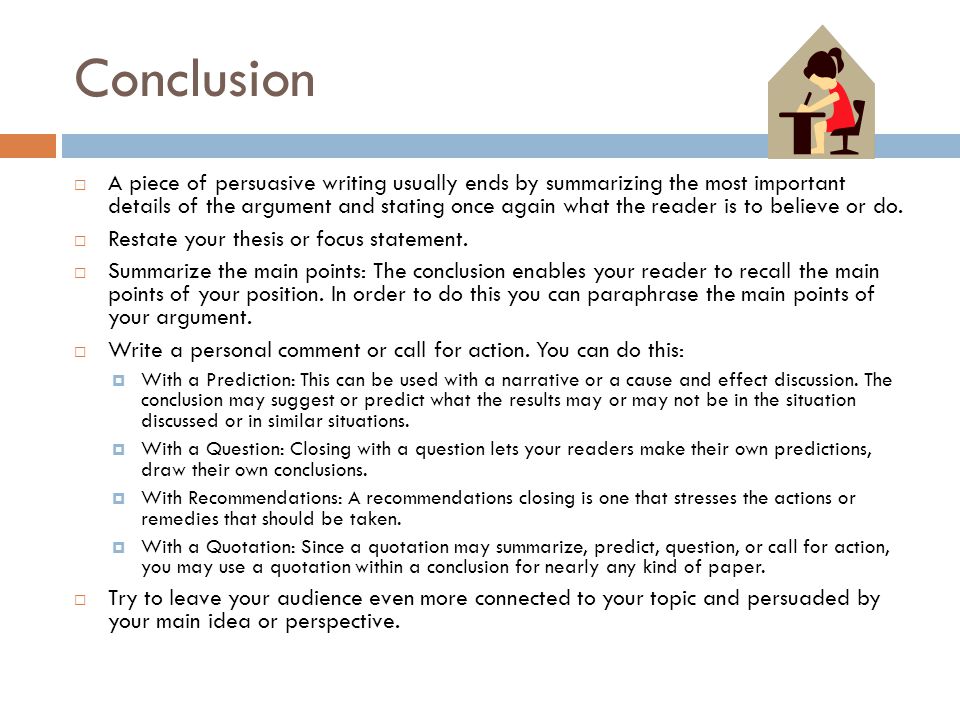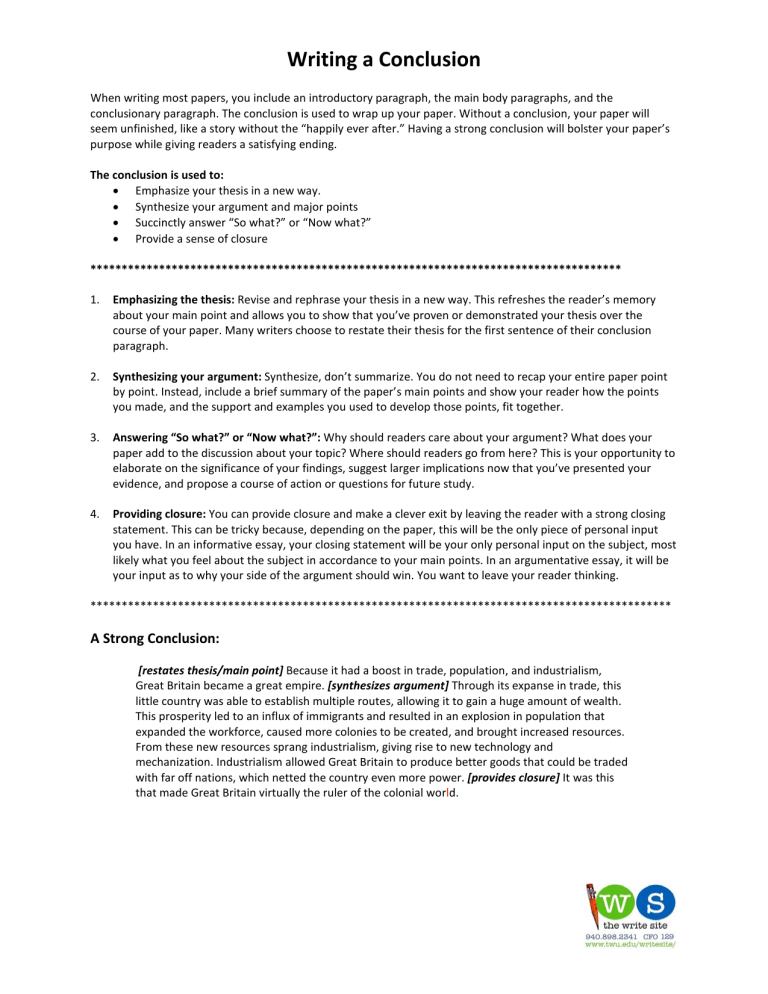

#Essay conclusion examples how to
When considering how to write a conclusion that works, here are the key points to keep in mind: It should only sum up what you have already written, revisit your thesis statement, and end with a powerful final impression. Leave a powerful final impact on a reader.Īnother key thing to remember is that you should not introduce any new ideas or arguments to your paper's conclusion.Leave something extra for your reader to think about.

Give a sense of completeness and closure on the topic.Show how you the author has proved their thesis statement.Demonstrate to readers that the author accomplished what he/she set out to do.Here are the core goals a good conclusion should complete: In this section, we will share some core ideas for writing a good conclusion, and, later in the article, we will also provide you with more practical advice and examples. Although there are generally no strict rules on how to formulate one, there are some basic principles that everyone should keep in mind. However, we are going to walk you through this process step by step. Writing a good conclusion for a paper isn’t easy. Therefore, if you are wondering “what is a good closing sentence like?” – keep on reading. When it comes to writing academic papers, a concluding statement refers to an opinion, judgment, suggestion, or position arrived at by logical reasoning (through the arguments provided in the body of the text). However, this term is rather broad and superficial. According to the standard conclusion definition, it is pretty much the last part of something, its result, or end. Before we can move on, let’s take a moment here to define the conclusion itself.


 0 kommentar(er)
0 kommentar(er)
